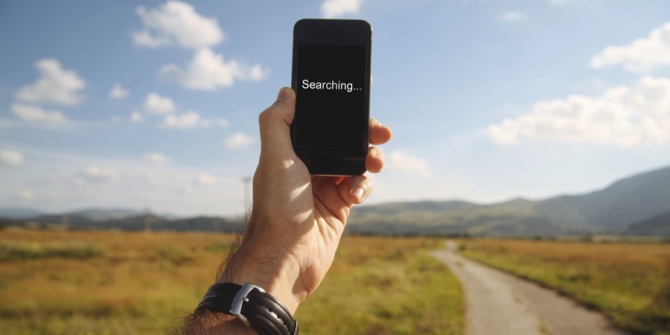If your job involves working in remote locations, you might think that communicating with your colleagues back at the office is simple: you have a mobile phone and you’ll contact them if you need to. But what happens if the location you are working in doesn’t have a mobile signal? Imagine you were alone and you had an accident, felt threatened, or found yourself in a potentially dangerous situation? Alerting others and summoning for help could prove to be difficult, and could potentially be life-threatening.
While some mobile phone users in urban areas benefit from 4G coverage and ever-increasing internet speeds, millions still live in so-called ‘partial not-spots’ – places where there may not be any signal at all from any of the main operators. According to This is Money, “as much as 20 per cent of the UK is blighted by poor reception from one or more [mobile] operators”.
A sizeable chunk of the UK’s workforce, including farmers, agriculturalists, sewage treatment workers and even HGV drivers, now operates alone in remote locations and high-risk environments. As such, organisations need to improve connectivity with their mobile workforce.
LONEALERT’s Anywhere solution addresses this issue by allowing employers to monitor their workforce regardless of geography or mobile coverage. Anywhere comes with a satellite communicator, equipped with GPS technology so that lone workers can be monitored and protected even in areas with no mobile signal. It also contains two panic buttons: one to alert the attention of non-emergency assistance, and the other for calling emergency services.
Lone workers, too, need to take responsibility for their own safety by taking reasonable care of themselves, identifying potential hazards and ensuring they are adequately trained to use the necessary equipment. They should also familiarise themselves with the hazards and risks they might face when working remotely, including:
- Getting lost – working in unfamiliar locations can lead to disorientation
- Injury / illness – having to deal with an unexpected illness or injury
- Working with machinery – crushes or falls from operating machinery can be life-changing and life-threatening
- Confined spaces – such as water tanks, sewers and pits may contain unsafe atmospheres which can cause poisoning or suffocation
- Adverse weather – when working outdoors, extreme weather conditions can have an adverse affect on the ability to carry out certain tasks safely
- Mechanical breakdown – travelling to and from remote locations can run the risk of a mechanical breakdown
- Wild animals / livestock – working outdoors or with animals can pose a risk of illness or injury from wild animals or livestock
- Communication failure – when there is battery failure or no mobile signal, summoning for help might be impossible
Control measures for lone and remote workers
- Always make sure you carry a lone worker panic alarm so that you can easily summon help in the event of an emergency
- Have a communication backup if one should fail – examples are a mobile phone, lone worker device, emergency response beacon, etc.
- Tell a member of your team when you are leaving, and when you are expected to return (LONEALERT’s smartphone app can automate this process)
- Familiarise yourself with the location and area you are visiting so you can locate safety points quickly
- Ask yourself: Is it necessary to work by myself, or can I go with a colleague?
- Consider the potential dangers or risks you might encounter and ensure you are fully trained on how to deal with these scenarios
- Ensure clothing and footwear is suitable for the conditions and tasks at hand. Study the weather forecast leading up to deployment and decide whether conditions are acceptable
The risks of working in remote locations can be greatly reduced simply by being aware of the dangers and implications, as well as having back up and support when needed – and knowing how to call for help.







